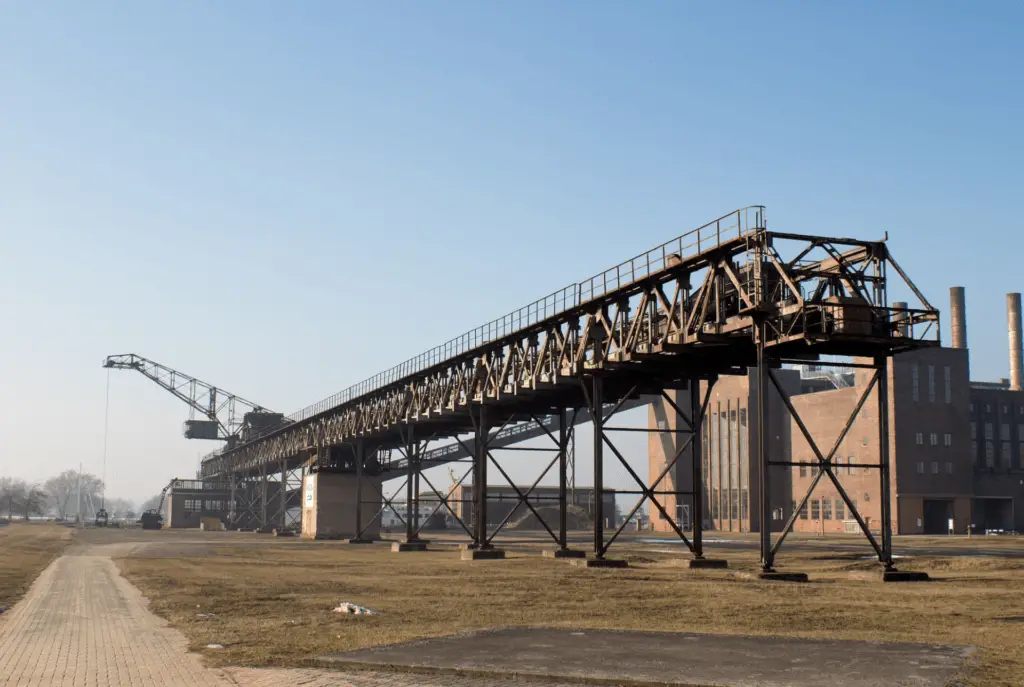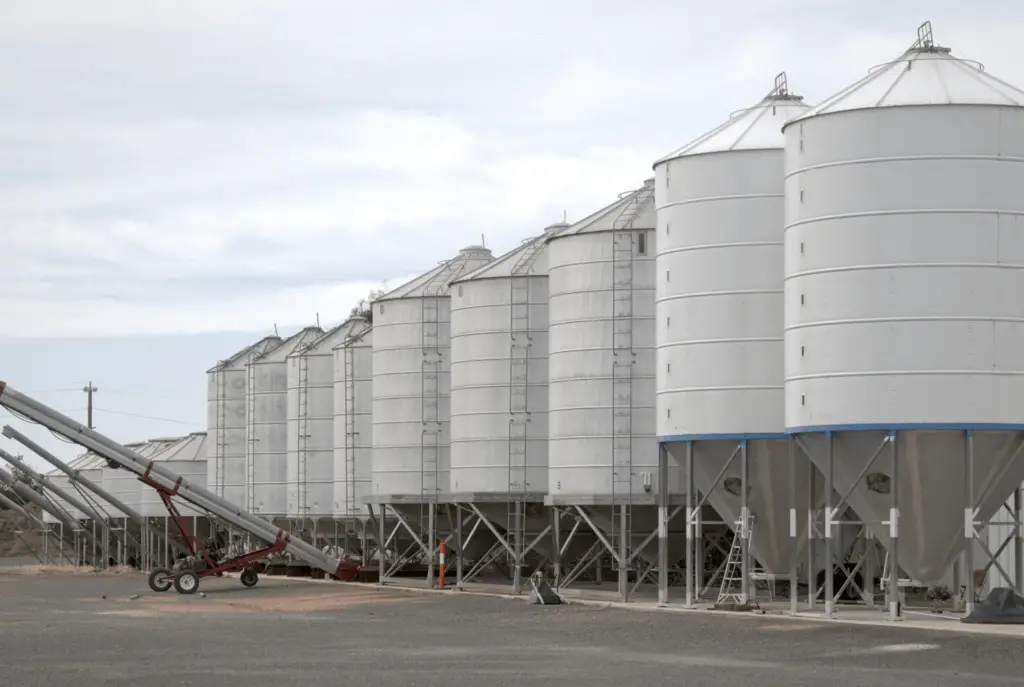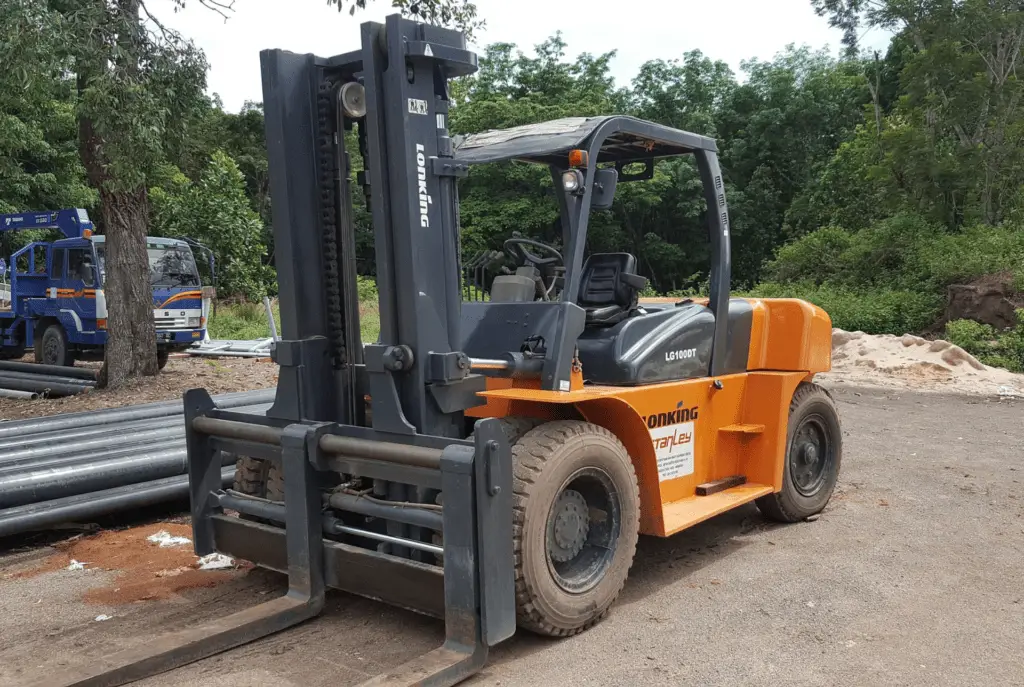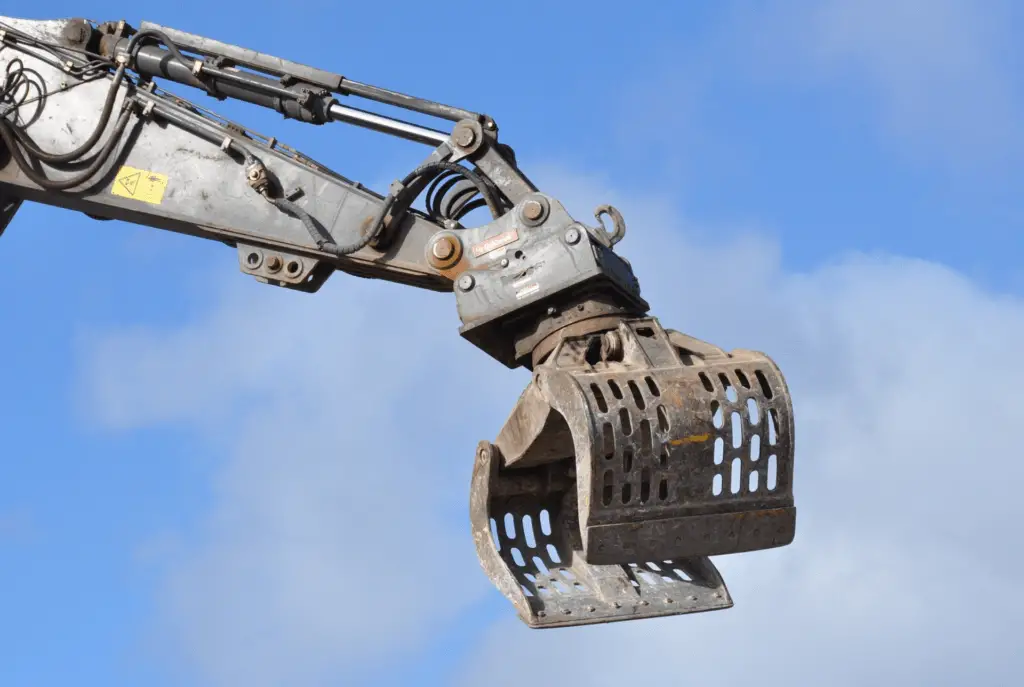What is bulk cargo handling equipment?
Bulk cargo handling equipment refers to the specialized machines and tools used in the process of loading, unloading, and transporting large quantities of loose or unpackaged materials, known as bulk cargo.
What are the 5 types of cargo handling equipment onboard?
When it comes to cargo handling equipment on board, there are five essential types that you should be aware of.
These types of equipment play a crucial role in efficiently and safely handling bulk cargo.
1. Cranes

Cranes are a common sight onboard ships and are used for lifting and moving heavy loads. They come in various types, such as ship-to-shore cranes, mobile cranes, and overhead cranes.
These powerful machines allow for efficient loading and unloading of cargo from ships.
2. Conveyors

Conveyors are another important type of equipment onboard.
They are used to transport bulk cargo over long distances, eliminating the need for manual labor and increasing efficiency.
Conveyors consist of a belt or chain that moves materials along a specified path, ensuring a smooth and continuous flow.
3. Hoppers

Hoppers are essential for storing and dispensing bulk cargo onboard. They ensure a steady flow of materials during loading and unloading processes.
Hoppers are commonly used in industries such as mining and agriculture, where materials need to be stored temporarily before further processing.
4. Forklifts

Forklifts are versatile machines that are used for lifting and moving pallets of bulk cargo. They are equipped with forks that can be raised or lowered to lift and transport materials.
Forklifts come in various sizes and capacities to handle different loads, making them a valuable asset onboard.
5. Grabs

Grabs are specialized attachments that are used with cranes to handle bulk cargo, such as coal or grain.
They are designed to efficiently and safely scoop up loose materials, ensuring efficient loading and unloading operations.
What are the five major bulk cargoes?
Bulk cargo refers to large quantities of loose or unpackaged materials that are typically transported in their natural state.
Five major types of bulk cargo are commonly handled in various industries:
1. Coal: Coal is a widely used fossil fuel and is one of the most significant bulk cargoes. It is primarily used for electricity generation and industrial processes.
2. Grain: Grain, including wheat, corn, rice, and barley, is a vital agricultural commodity. It is often transported in bulk for processing, distribution, and export.
3. Ore: Ore refers to raw materials extracted from mines, such as iron ore, copper ore, and bauxite. These ores are transported in bulk to be further processed into metals or used as raw materials in various industries.
5. Raw materials: Various types of raw materials, including minerals, ores, chemicals, and aggregates, are transported in bulk. These materials serve as inputs for manufacturing processes in industries like construction, automotive, and electronics.
4. Petroleum: Petroleum, also known as crude oil, is a valuable natural resource used in the production of fuels and various petrochemical products. It is transported in bulk to refineries for processing.
Also Read:
What are the basics of cargo handling?
Cargo handling involves several key steps to ensure the safe and efficient transportation of goods. Here are some basics of cargo handling that every business should keep in mind:
Inspection:
Before loading the cargo, it is essential to inspect the goods for accuracy and condition. This helps identify any damaged or incorrect items and prevents any issues during transportation.
Organization
Proper organization is crucial to ensure the smooth flow of cargo handling operations. Sorting and categorizing goods based on their destination helps streamline the loading and unloading process.
Loading and Securing
Careful loading of goods onto the transportation vehicle is necessary to prevent damage and ensure stability.
Securely fasten the cargo to avoid shifting during transit, reducing the risk of accidents or breakage.
Transportation
During transportation, it is essential to follow proper handling procedures.
This includes ensuring the cargo is protected from external elements, such as weather or vibration, and that it is transported in compliance with relevant regulations.
Unloading
Upon arrival, the cargo must be safely unloaded and transferred to its intended location. Use appropriate equipment and techniques to prevent any damage during unloading.
What is one example of bulk material handling equipment?
One example of bulk material handling equipment is a grab. Grabs are specialized attachments that are used in conjunction with cranes to handle bulk cargo, such as coal, grain, or ore.
These grabs are designed to efficiently and safely scoop up loose materials from a storage facility or a transportation vehicle.
Grabs come in various types, such as mechanical, hydraulic, and electric, and can be customized to suit different types of cargo and operational requirements.
Grabs are essential in industries such as mining, agriculture, and transportation, where the handling of bulk cargo is a common requirement.
Which one equipment that is mainly use in securing cargo?
Cargo nets are a critical piece of equipment for securing cargo during transportation.
Cargo net made of durable materials like nylon or polyester that is specifically designed to hold items in place and prevent them from shifting or falling during transit.
Cargo nets come in various sizes and configurations to accommodate different types and sizes of cargo.
In addition to providing security, cargo nets also offer convenience. They are lightweight and easy to install, allowing for quick and hassle-free use.
What is the rule of thumb for cargo lashing?
The rule of thumb states that cargo should be secured with at least four lashings. These lashings should be evenly distributed and placed at each corner of the cargo.
The use of four lashings helps to distribute the load evenly and prevent shifting or movement during transit. It also provides stability and minimizes the risk of damage or loss.
Additionally, it is important to use appropriate lashings that are designed to withstand the weight and characteristics of the cargo. This may include using straps, chains, or ropes with sufficient strength and durability.
What is cargo choking?
Cargo choking refers to a situation where the movement or shifting of cargo during transport leads to a blockage or obstruction.
This can occur when cargo is not properly secured or when it shifts unexpectedly due to external factors like rough seas or sudden stops.
When cargo chokes, it can cause instability in the transportation vehicle, such as a truck or ship, which can affect the overall balance and handling.
This can jeopardize the safety of the crew, damage the vehicle, and result in delays in the transportation process.
To prevent cargo choking, it is crucial to ensure that cargo is properly secured and stowed before and during transportation.
What are the kinds of cargo gear or ships gear?
Cargo gear, also known as ship gear, refers to the equipment used on board ships to handle and secure cargo.
There are several types of cargo gear commonly used in maritime operations.
1. Cranes: Cranes are a vital component of cargo gear and are used to lift and move heavy loads.
They are often found on the decks of ships and can be operated from fixed positions or mounted on rails for greater mobility.
2. Winches: Winches are mechanical devices used to handle ropes and cables.
They are commonly used for mooring and anchoring operations, as well as for lifting and lowering cargo.
3. Hooks: Hooks are essential for attaching and securing cargo to lifting equipment.
They come in various shapes and sizes to accommodate different types of cargo and lifting requirements.
4. Slings: Slings are flexible straps or chains used to secure cargo to lift equipment.
They provide support and stability during lifting operations and can be adjusted to accommodate various sizes and shapes of cargo.
5. Shackles: Shackles are metal fasteners used to connect and secure various components of cargo gear.
They are essential for joining chains, hooks, and slings together to form a secure lifting system.
